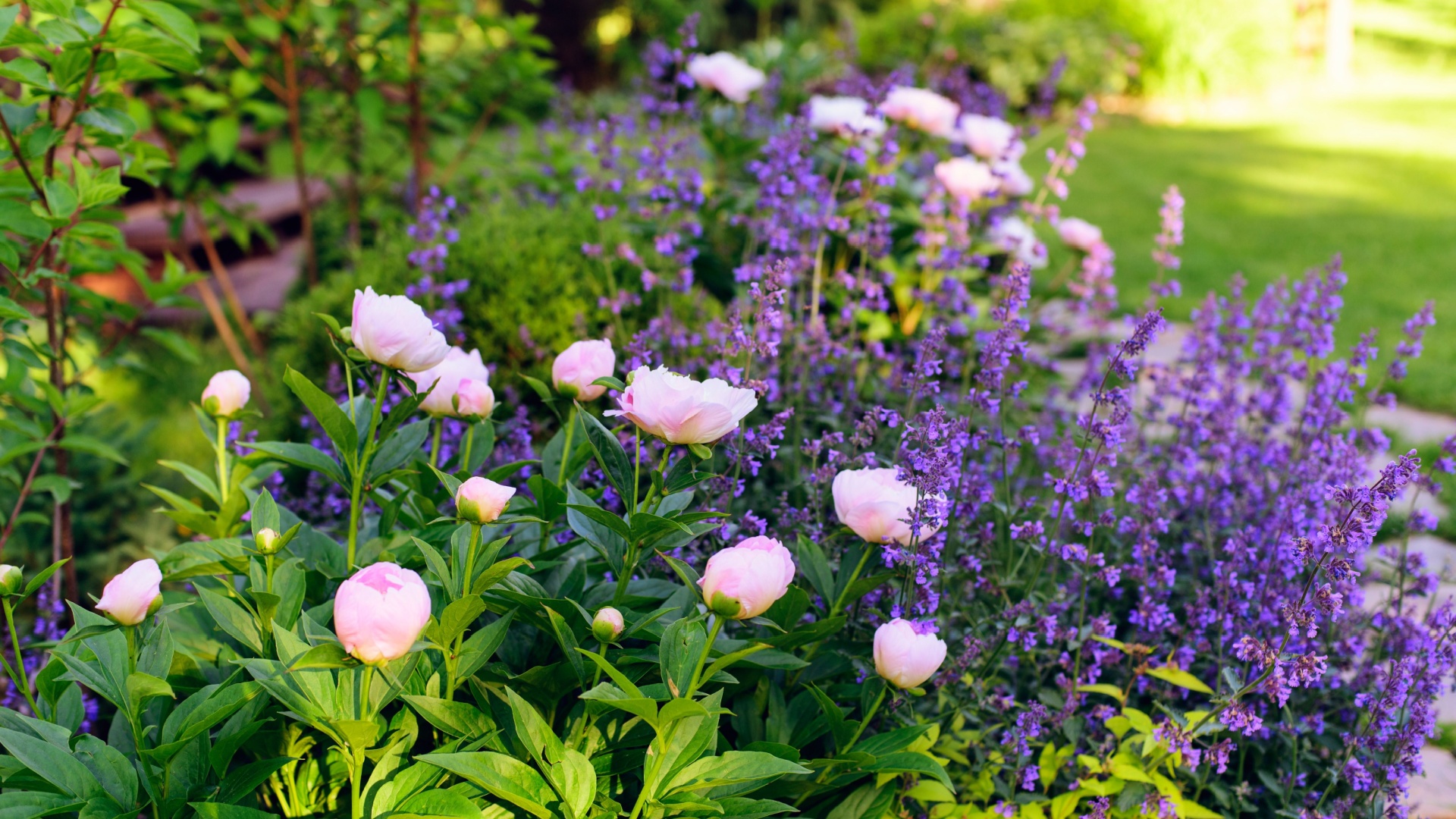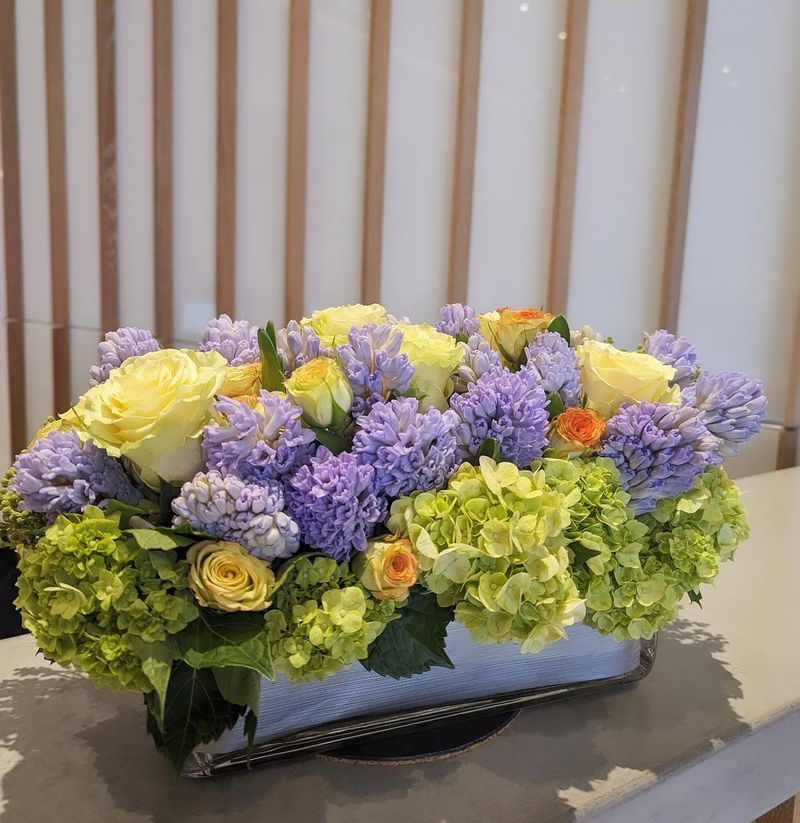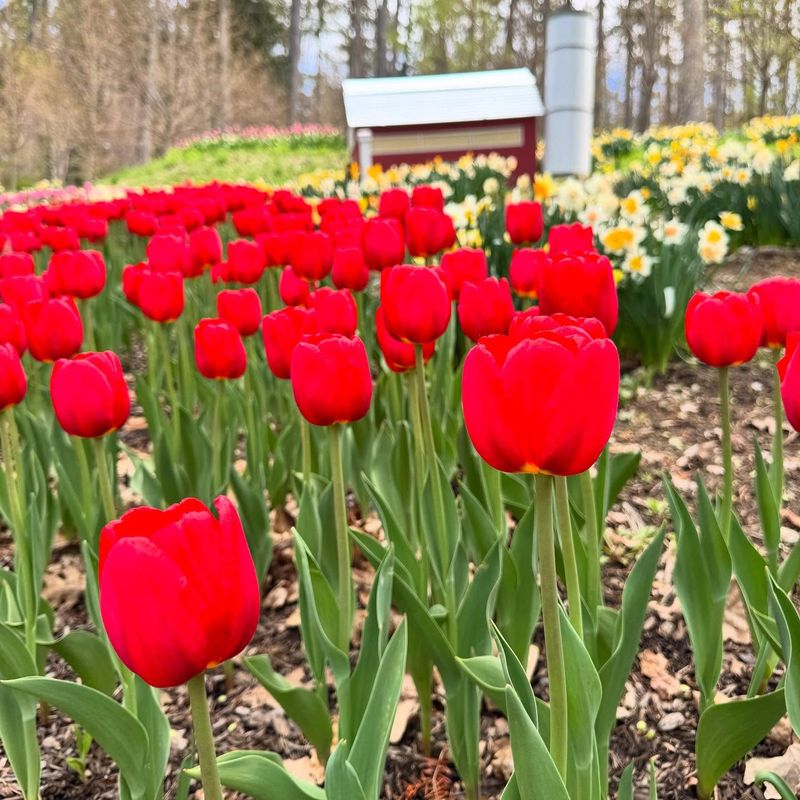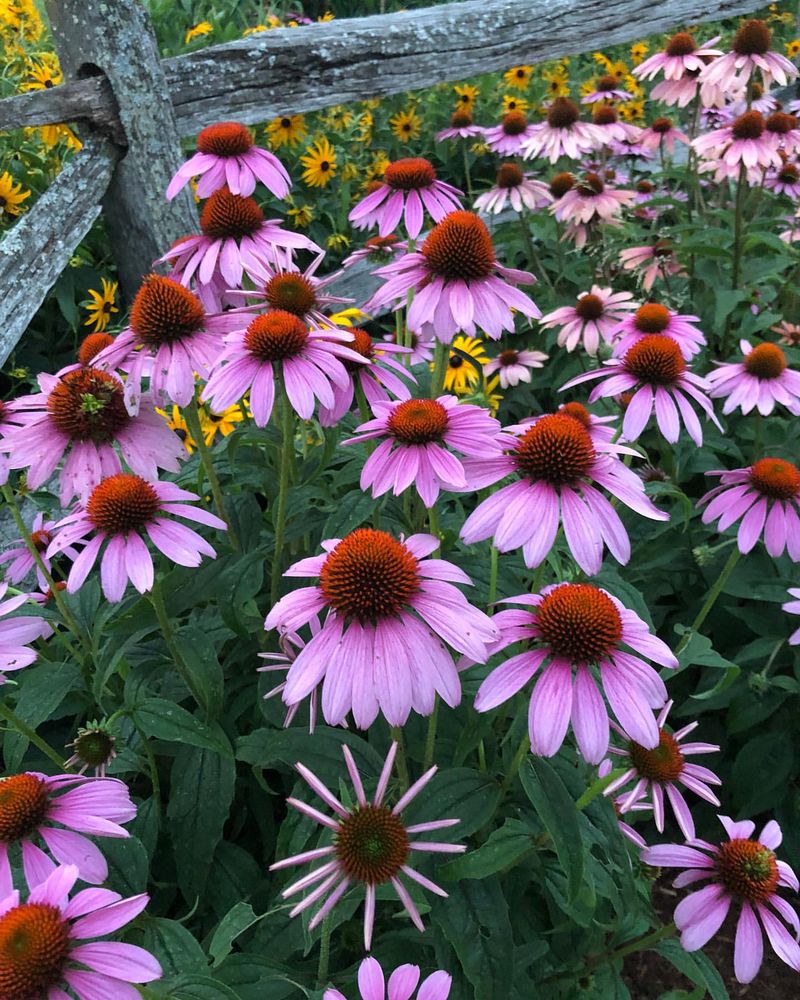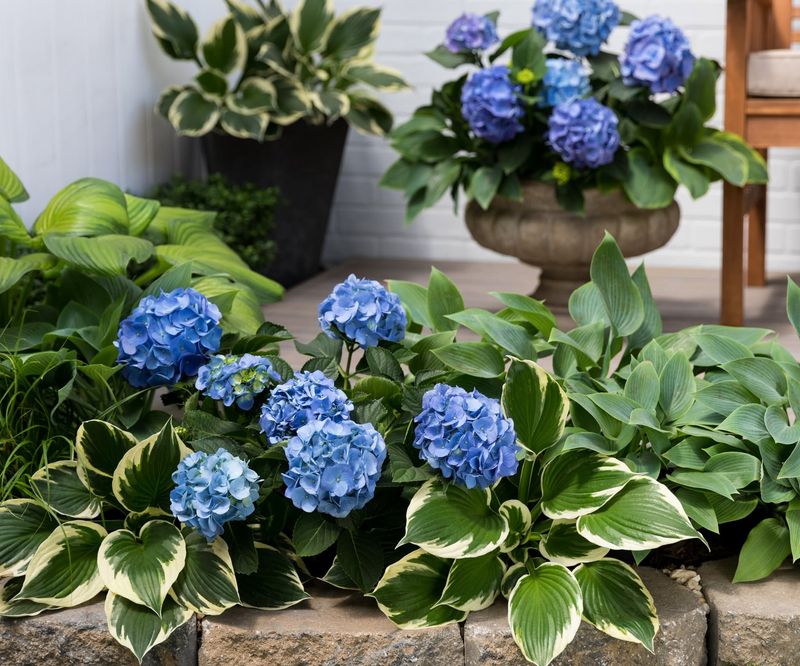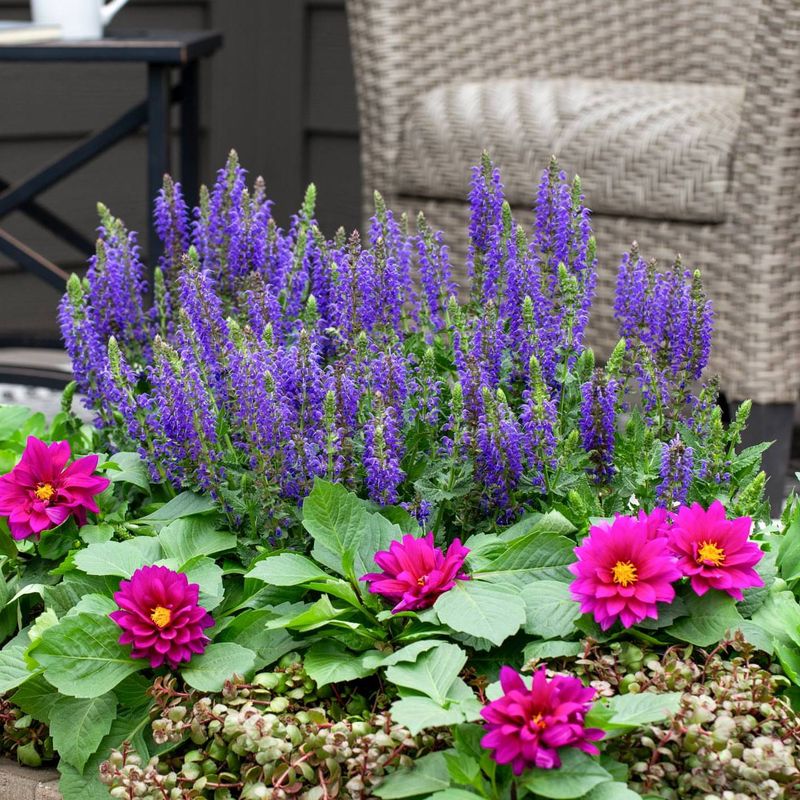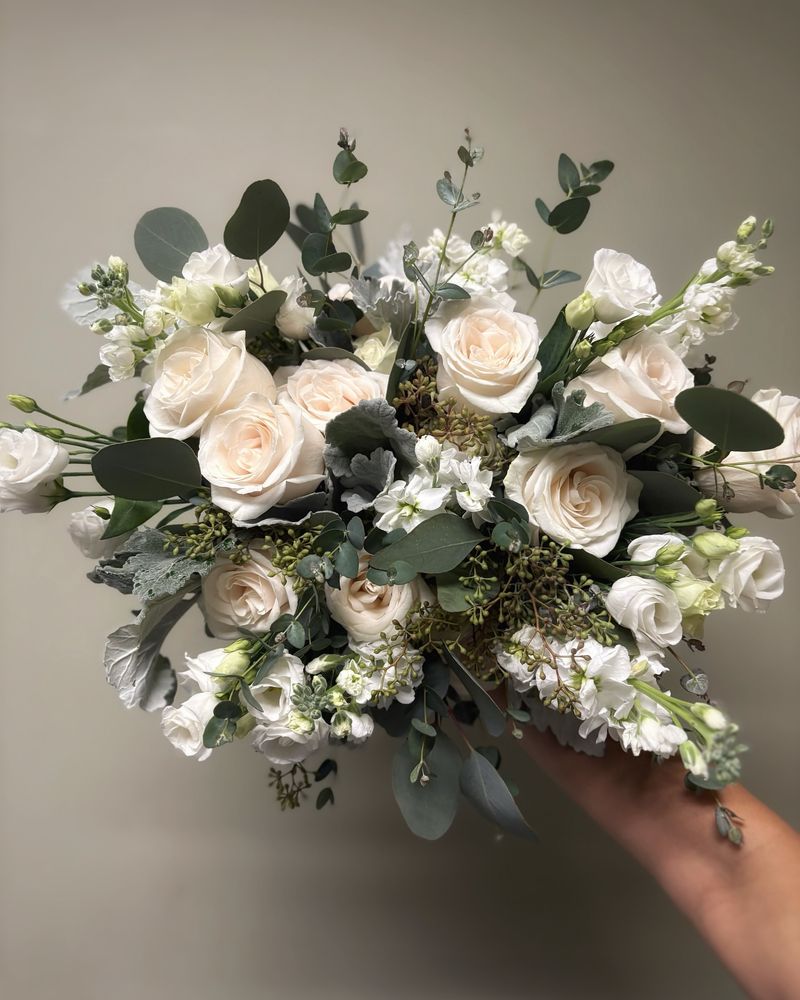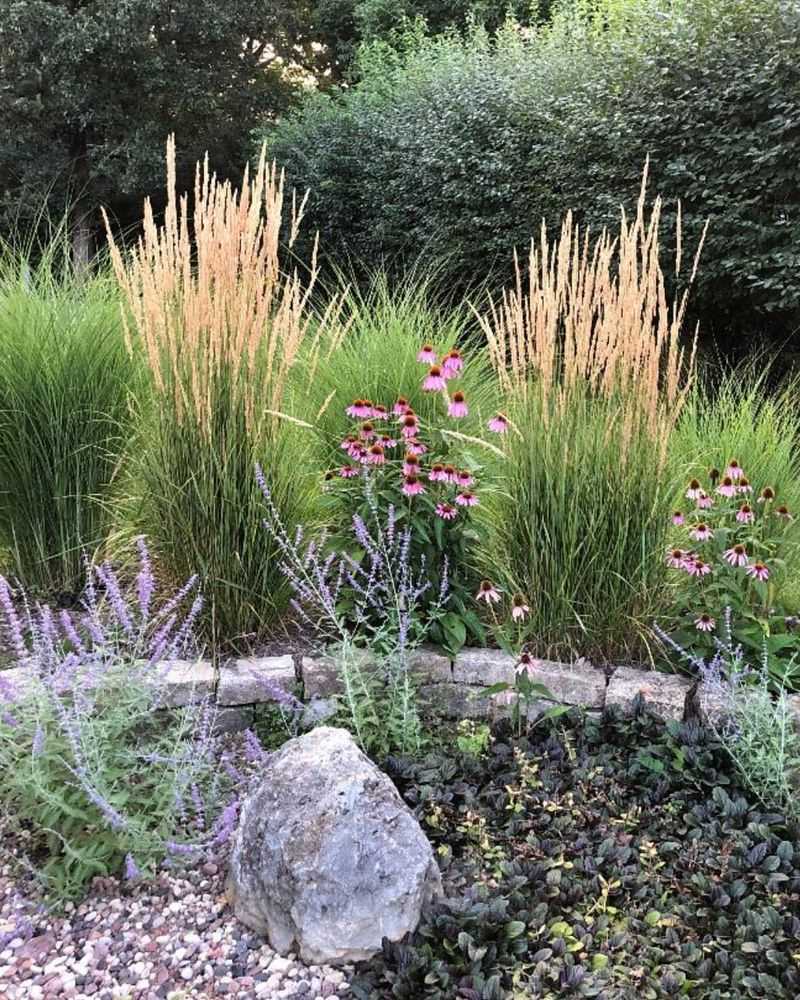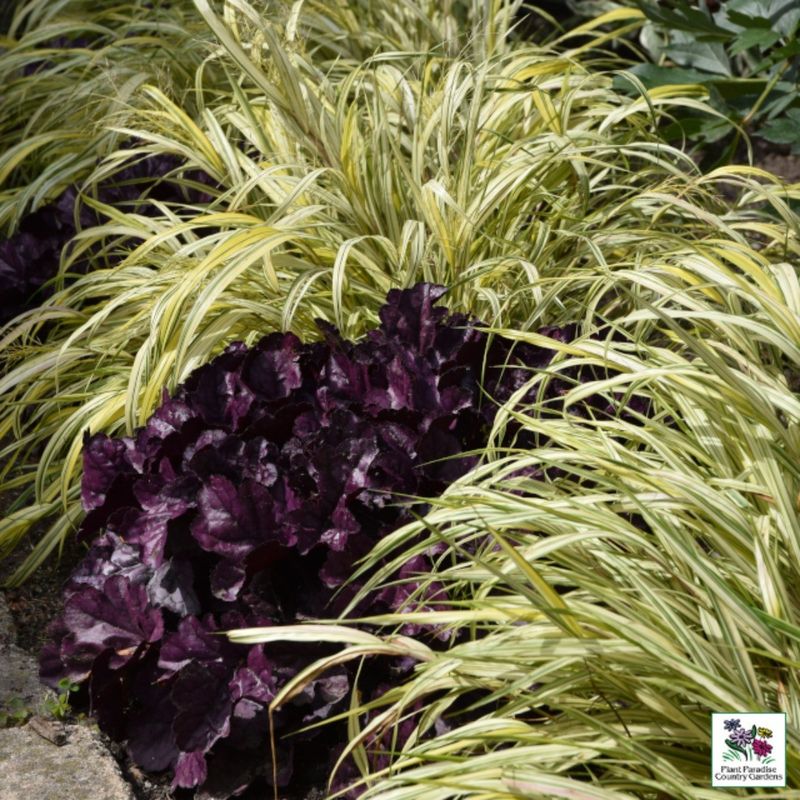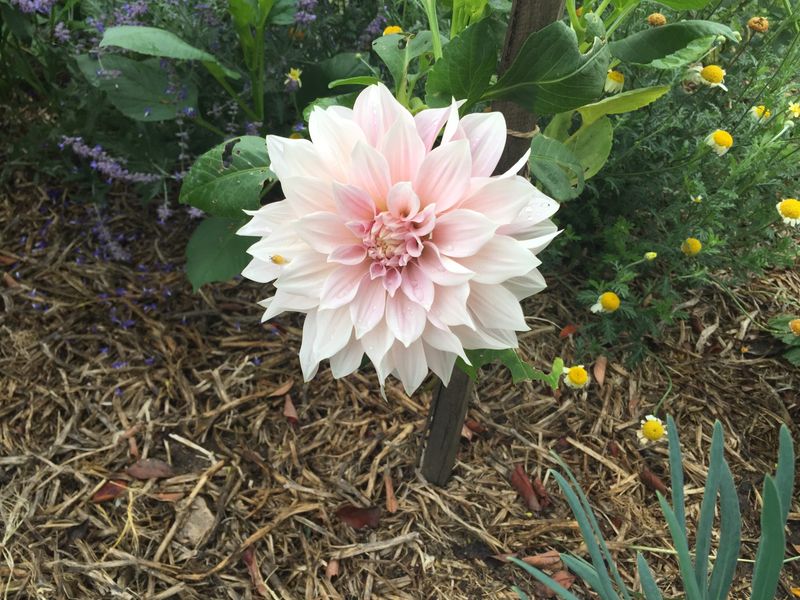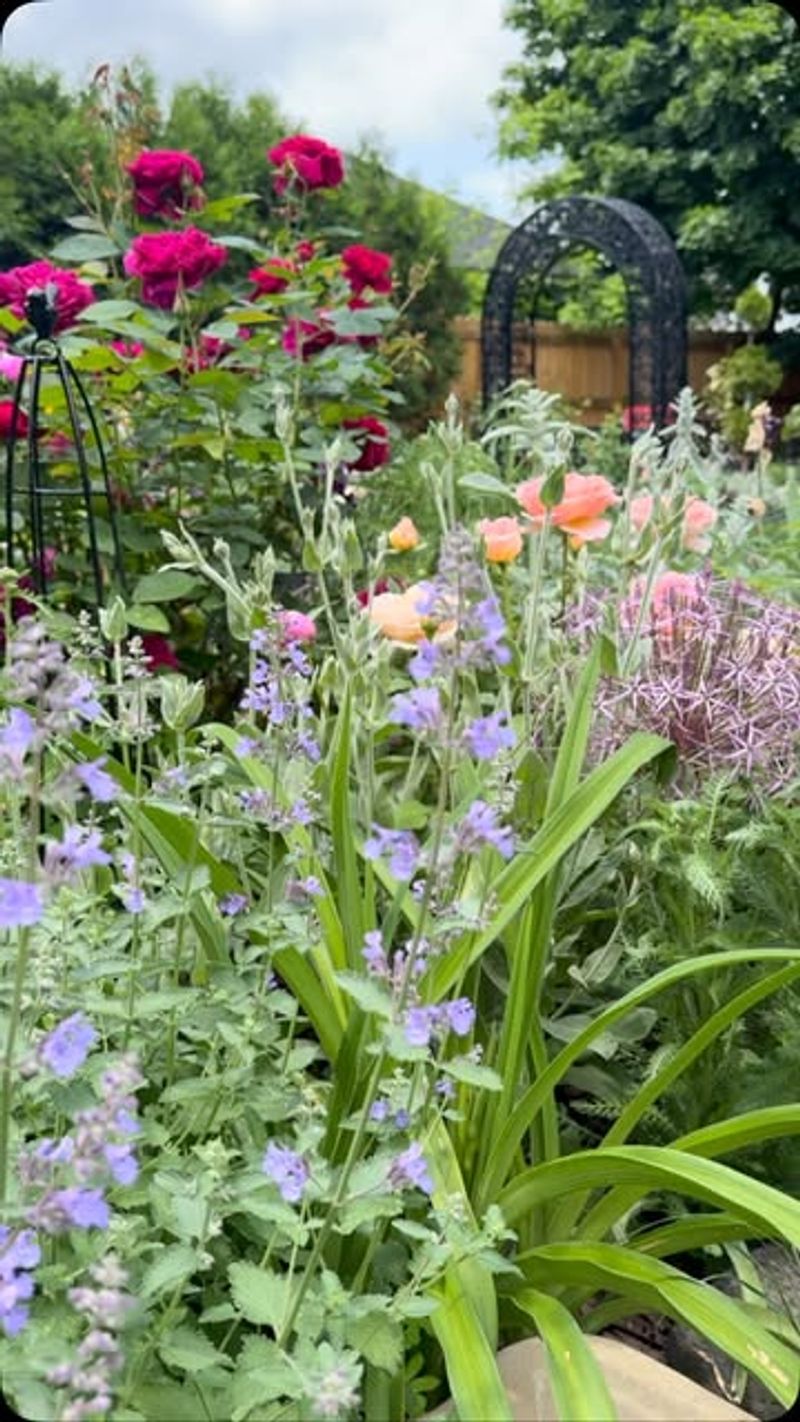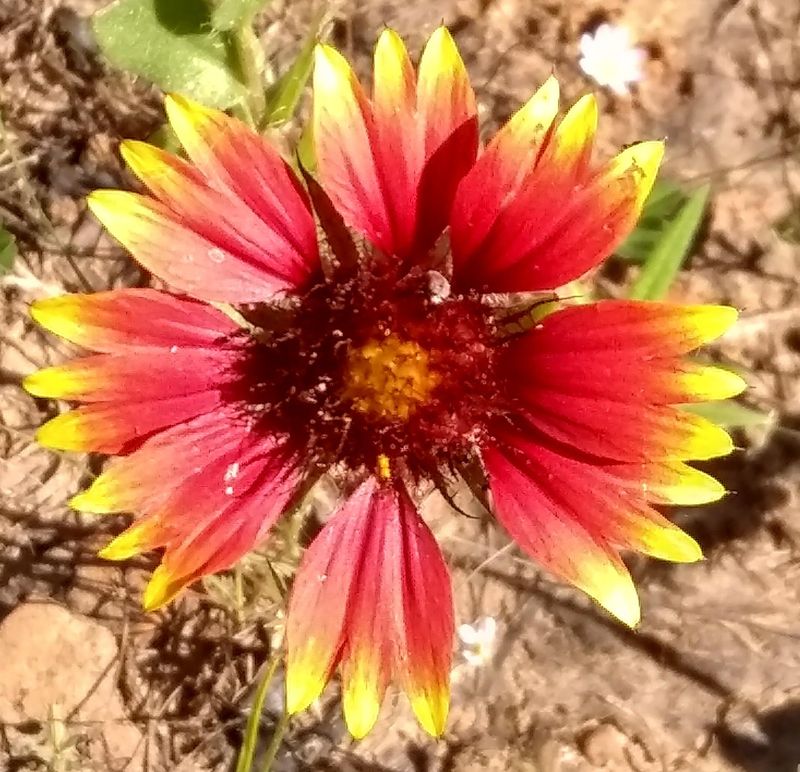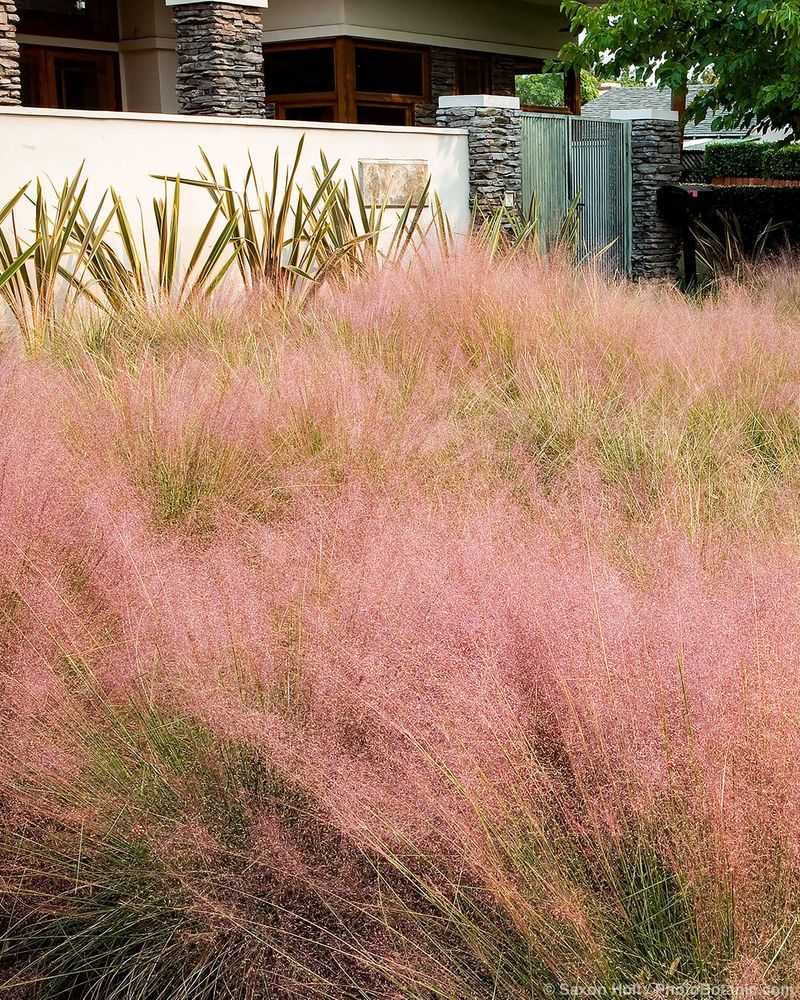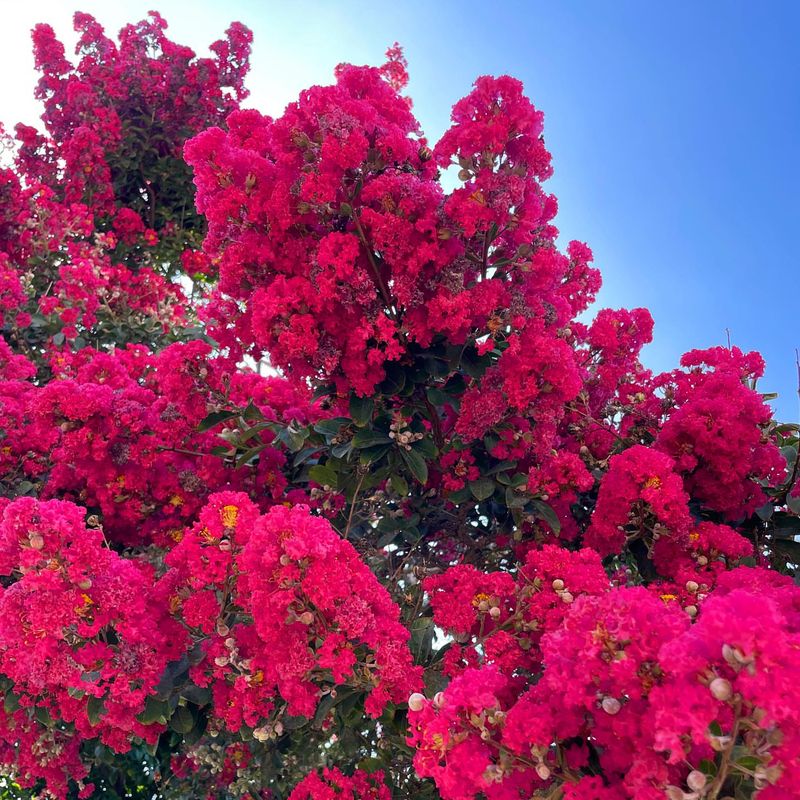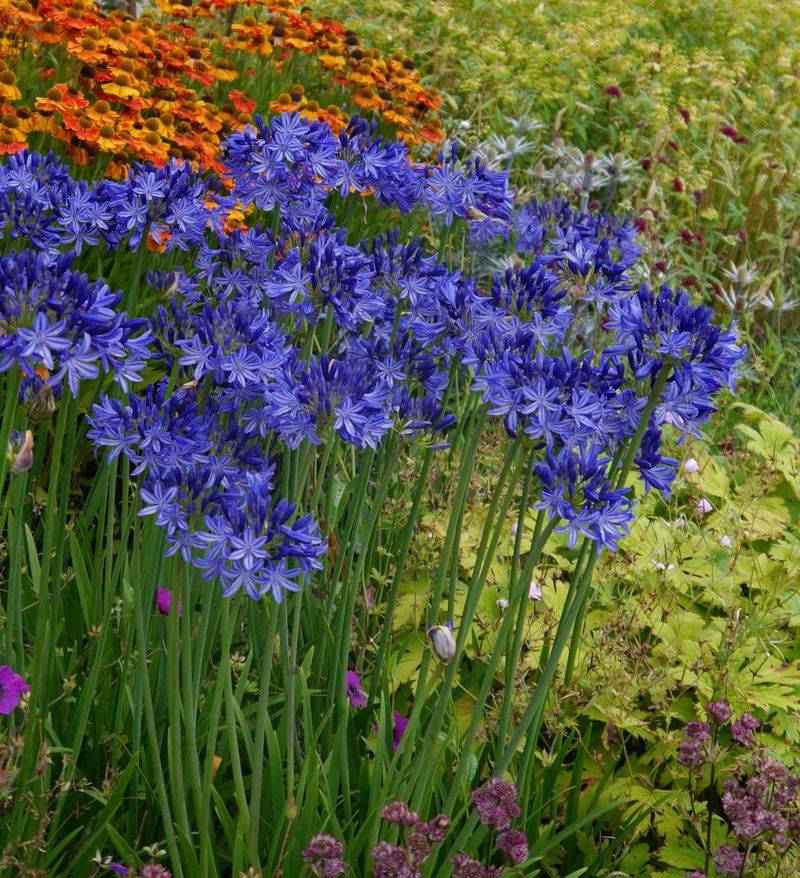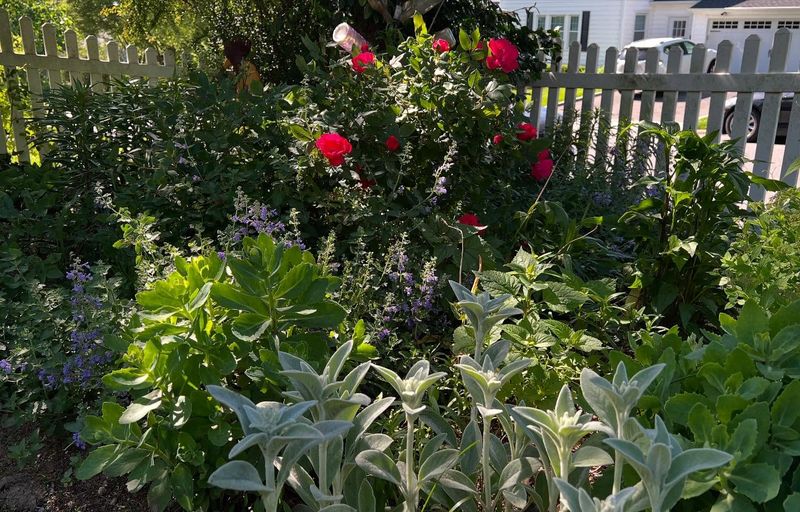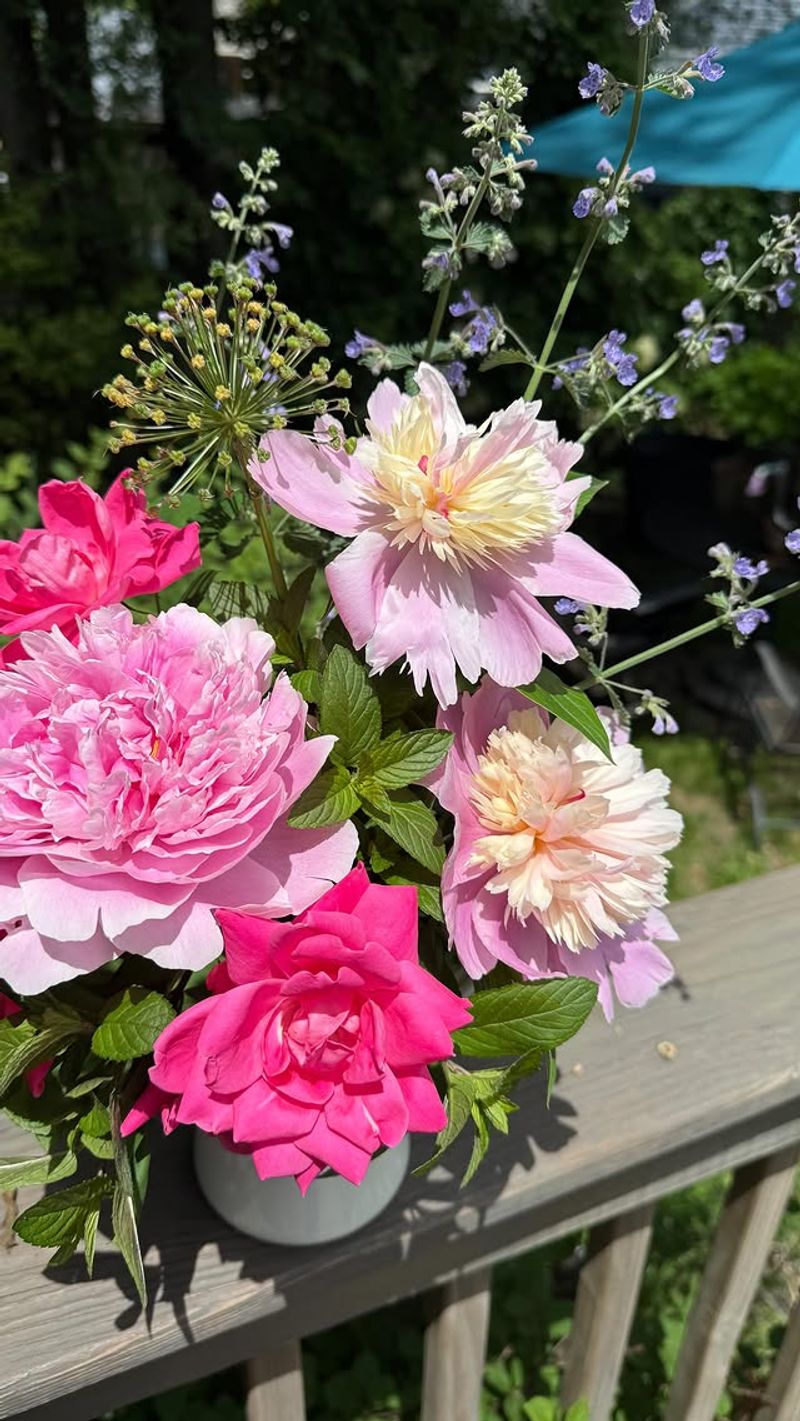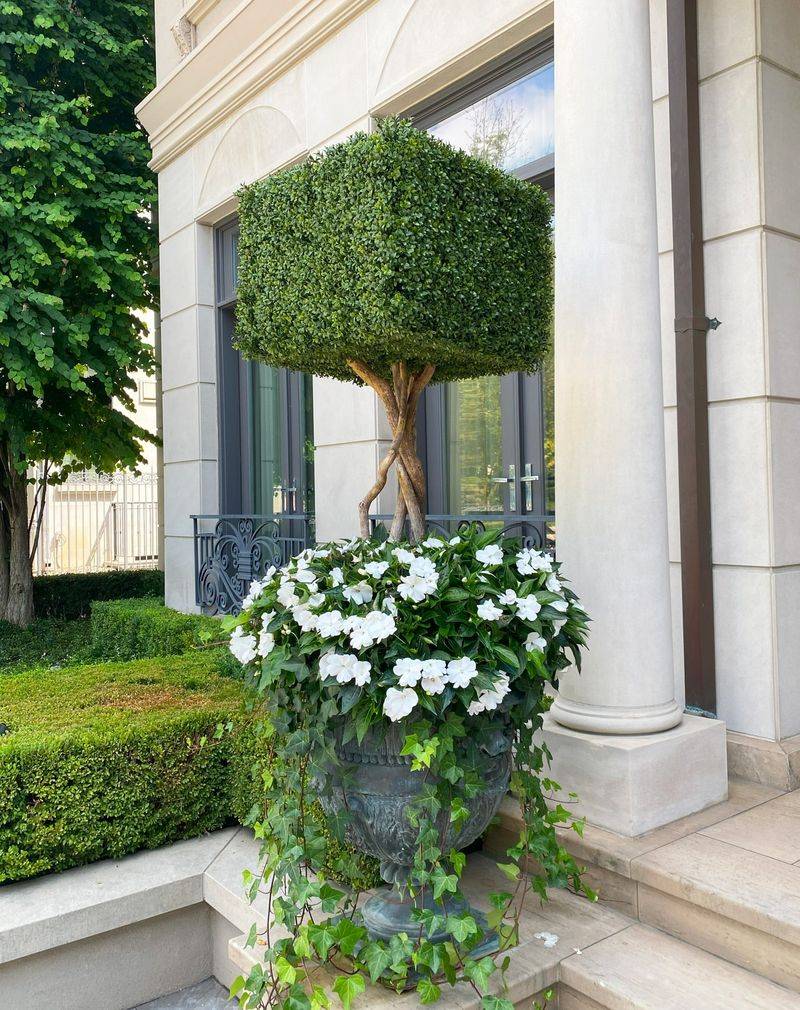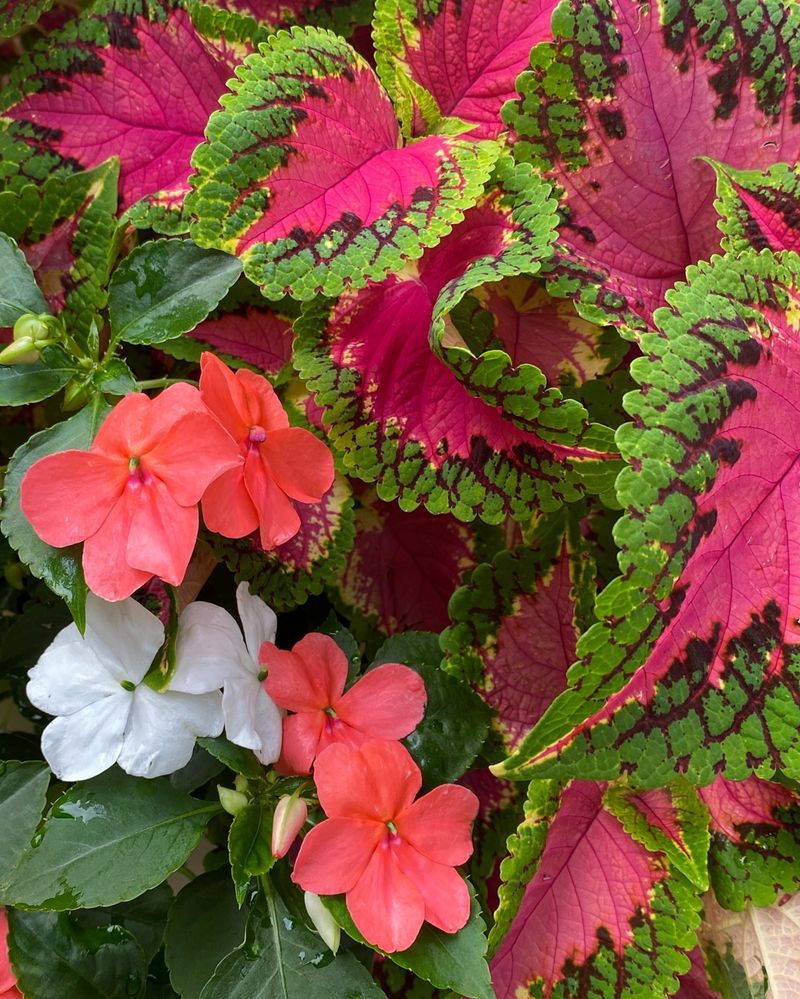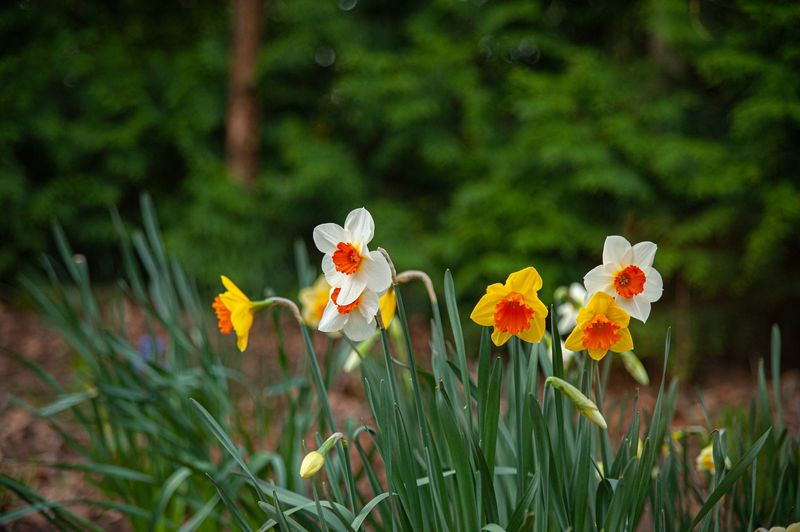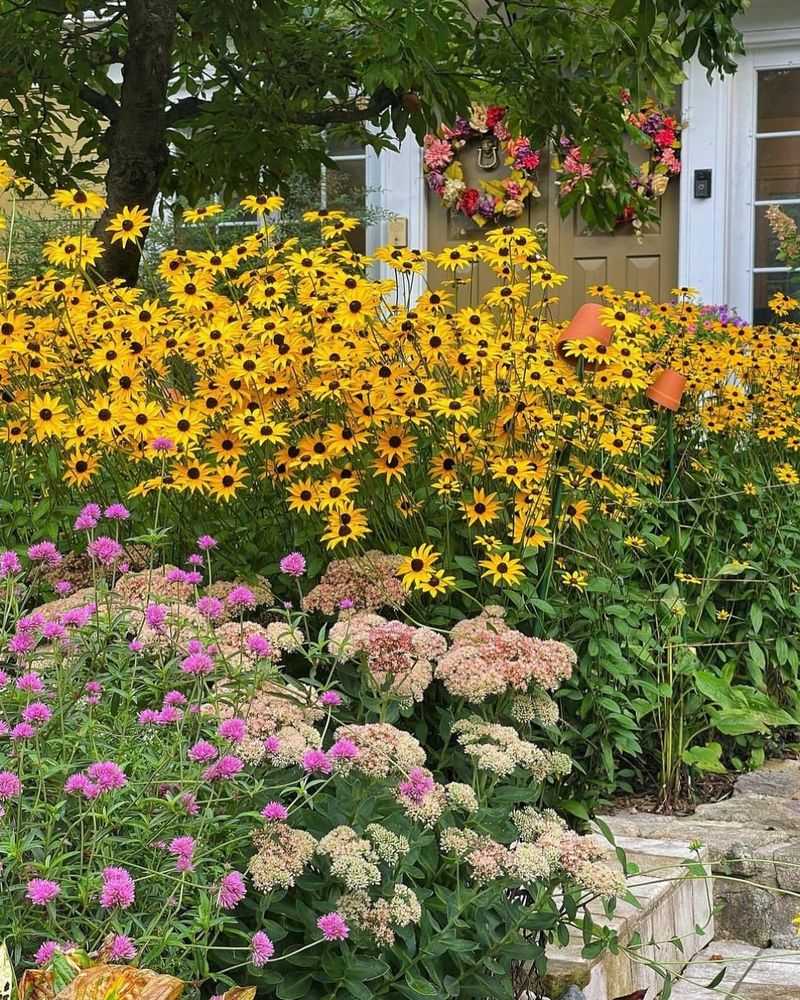Ready to turn your front yard into a floral showstopper? These 20 stunning flower combos are designed to wow from the curb—and have your neighbors sneaking a second look.
Whether you love bold colors, soft pastels, or year-round charm, these pairings will give your home instant curb appeal without needing a landscape designer.
1. Lavender and Yellow Roses
The dreamy scent of lavender mingling with the classic beauty of yellow roses creates an instant showstopper. The contrast between the purple-blue spikes and bright sunny blooms catches everyone’s eye from the street.
Plant these together along your walkway for a sensory experience that delights both the eyes and nose. The roses provide height and drama while the lavender creates a soft, fragrant carpet below.
This pairing works in nearly any climate and soil type, making it accessible for both beginner and expert gardeners.
2. Red Tulips with White Daffodils
Nothing says spring has arrived like the bold combination of crimson tulips standing tall among pure white daffodils.
This classic European-inspired pairing creates a candy-cane effect that brightens even the dreariest spring day. Both flowers bloom at similar times, ensuring your display stays coordinated.
Plant in large clusters rather than straight lines for a more natural, flowing appearance that mimics how they might grow in the wild. As a bonus, deer and squirrels typically avoid daffodils, helping protect your entire display.
3. Purple Coneflowers and Black-Eyed Susans
Wild prairie charm comes alive with this stunning native plant combination. The rich purple petals of coneflowers create magical contrast against the golden-yellow blooms of black-eyed Susans, mimicking a sunset on the horizon.
Both are drought-tolerant perennials that attract butterflies and bees, turning your front yard into a bustling ecosystem. They’ll return year after year with minimal care, slowly spreading to create impressive drifts of color.
For maximum impact, plant in groups of at least seven of each type, allowing their natural growth patterns to create a meadow-like appearance.
4. Hydrangeas with Hostas
Lush and luxurious, this shade-loving duo creates a sophisticated look that whispers elegance. The massive blooms of hydrangeas provide spectacular summer color while the variegated hostas below offer interesting foliage even when flowers aren’t present.
The blue, pink, or purple hydrangea flowers pop against the cool green and cream leaves of hostas. This combination works beautifully in partially shaded areas where many other flowers struggle.
For an extra touch of refinement, add a simple stone border or mulch with dark pine straw to make the colors stand out even more.
5. Salvia and Coreopsis
Drought-resistant and absolutely stunning, the deep blue spikes of salvia create magical contrast against the sunny yellow daisy-like coreopsis flowers.
Hummingbirds and butterflies can’t resist this dynamic duo! Both plants bloom throughout summer with minimal watering needs, making them perfect for busy homeowners or those in water-restricted areas. The different flower shapes add visual interest while their similar heights create a harmonious display.
Plant these in full sun areas where their vibrant colors can really shine. They’ll continue performing beautifully even during the hottest months when other plants might struggle.
6. White Roses and Lamb’s Ear
Elegance meets texture in this sophisticated pairing that looks straight out of an English garden. Pristine white roses provide classic beauty while the soft, silvery-gray foliage of lamb’s ear creates a plush carpet below.
The fuzzy texture of lamb’s ear leaves adds tactile interest and their color enhances the purity of the white roses. This combination works in both formal and cottage-style gardens, bringing a sense of timeless grace to your entryway.
The silvery lamb’s ear also reflects moonlight, making this pairing especially magical during evening hours when neighbors are out for walks.
7. Zinnias with Ornamental Grasses
Vibrant and carefree, multi-colored zinnias dancing among feathery ornamental grasses create a display that looks professionally designed. The structural contrast between rounded zinnia blooms and airy grass plumes adds sophisticated visual interest.
Zinnias provide a rainbow of colors from summer until first frost, while grasses add movement as they sway in the slightest breeze. This combination thrives in full sun and stands up beautifully to summer heat.
For maximum impact, choose tall varieties of both plants and place them where afternoon light will illuminate the grass plumes from behind, creating a magical glowing effect.
8. Coral Bells and Japanese Forest Grass
Foliage takes center stage with this striking textural combination that provides year-round interest. The burgundy, purple, or caramel leaves of coral bells (Heuchera) create bold contrast against the bright chartreuse striped blades of Japanese forest grass.
Both plants thrive in partial shade, making them perfect for those tricky spots beneath trees or along north-facing foundations.
Their complementary colors create a visual feast even without flowers. The delicate bell-shaped flowers that appear on thin stems above coral bells in summer add an extra bonus to this already stunning combination.
9. Dahlias with Russian Sage
Drama unfolds in your front yard when dinner-plate dahlias meet the airy purple haze of Russian sage. The large, structural blooms of dahlias in vibrant colors create show-stopping focal points amid the cloud-like purple flowers of Russian sage.
This pairing combines the best of both worlds – bold, attention-grabbing blooms alongside delicate, wispy textures. Russian sage’s silver-gray foliage also provides beautiful contrast against the deep green dahlia leaves.
Both plants attract pollinators and bloom from midsummer until frost, ensuring months of neighborhood envy. Plant where they’ll receive full morning sun but some afternoon shade in hotter climates.
10. Allium and Catmint
Magical purple globes of allium flowers rising above a sea of lavender-blue catmint creates a fairytale-like display in late spring. The structural round allium blooms appear to float above the soft, billowing clouds of catmint flowers.
This combination offers weeks of color when many spring bulbs have faded but summer perennials haven’t yet begun. Both plants are extremely low-maintenance and naturally repel deer and rabbits.
For dramatic effect, plant multiple allium bulbs in groups of odd numbers (5, 7, or 9) throughout a generous drift of catmint, creating a rhythm that draws the eye through your garden.
11. Blanket Flower and Blue Fescue
Southwestern vibes come alive with the fiery red-orange blooms of blanket flower (Gaillardia) paired with the cool blue-gray spikes of blue fescue grass. This drought-tolerant duo thrives in hot, sunny locations where many other plants would struggle.
The circular blanket flowers with their distinctive bullseye centers create beautiful contrast against the spiky, rounded mounds of blue fescue. Both return reliably year after year with minimal care.
This combination looks particularly stunning in gravel gardens or along driveways where heat reflects off hard surfaces. The plants will bloom from early summer through fall with deadheading.
12. Pink Muhly Grass and Sedum
Fall magic happens when pink muhly grass erupts in cotton-candy pink plumes alongside the deep rose flower heads of autumn sedum. This combination creates an ethereal display that glows magnificently in the low autumn sunlight.
Both plants offer structural interest and striking color at a time when many gardens begin to fade. The pink cloud-like effect of muhly grass seems to float above the sturdy, succulent sedum plants.
Place this pairing where afternoon light will backlight the grass plumes, creating a luminous effect that stops traffic. The dried seed heads of both plants continue providing winter interest long after blooming ends.
13. Crape Myrtle with Purple Fountain Grass
Regal and dramatic, a crape myrtle tree underplanted with arching purple fountain grass creates a multi-season masterpiece. The bright pink, white, or red summer flowers of the crape myrtle tree provide height while the burgundy-purple grass below adds movement and texture.
As summer progresses into fall, the crape myrtle’s foliage turns fiery orange-red, creating even more spectacular contrast with the purple grass plumes. This pairing works beautifully as a focal point near entryways or corners.
Both plants thrive in hot, sunny locations and require minimal watering once established, making this an eco-friendly choice for southern gardens.
14. Agapanthus and Day Lilies
Elegant blue globes of agapanthus flowers rising alongside the trumpet-shaped blooms of gold or orange day lilies create a regal summer display. The contrasting flower shapes and complementary colors make this combination particularly eye-catching from the street.
Both plants form attractive clumps that grow larger each year, eventually creating impressive drifts of color. Their strappy foliage remains attractive even when not in bloom, providing structure throughout the growing season.
This pairing thrives in full sun to light shade and tolerates a wide range of soil conditions, making it accessible for most gardeners. The combination peaks in early to midsummer.
15. Knockout Roses with Lamb’s Ear and Lavender
Triple the impact with this foolproof combination that offers color, texture, and fragrance. Vibrant knockout roses provide months of bold color while silvery lamb’s ear and purple lavender create a soft, textural carpet below.
The silver foliage acts as a color echo of the lavender flowers, creating a cohesive look. All three plants are drought-tolerant once established and resistant to most pests and diseases.
For maximum curb appeal, choose rose colors that complement your home’s exterior – red roses pop against white houses, while pink varieties look stunning against gray or blue siding.
16. Peonies with Catmint and Allium
Luxurious and romantic, this trio creates a cottage garden dream in late spring. Fluffy pink or white peony blooms take center stage while purple allium globes add height and whimsy, all floating above a sea of lavender-blue catmint flowers.
The combination offers different flower shapes, heights, and textures that work in harmony. The catmint continues flowering long after the peonies and allium have finished, extending the display for weeks. Plant this grouping where it can be viewed from windows as well as the street.
The fragrance of peonies adds another sensory dimension that makes this combination truly special.
17. Boxwood with White Impatiens
Timeless elegance defines this classic pairing that never goes out of style. The structured evergreen spheres or hedges of boxwood provide year-round framework while white impatiens create clouds of bright flowers throughout summer.
The formal geometry of clipped boxwood contrasts beautifully with the loose, flowing habit of impatiens. This combination works in both traditional and contemporary landscapes, adapting to various architectural styles.
Use this pairing to line walkways or frame entryways where its sophisticated simplicity can make a strong first impression. The white flowers seem to glow in evening light, welcoming visitors after sunset.
18. Coleus with New Guinea Impatiens
Forget flowers – foliage steals the show when the bold, patterned leaves of coleus mix with the glossy foliage and bright blooms of New Guinea impatiens. This shade-loving combination brings tropical vibes to northern gardens.
Choose coleus in burgundy, lime, or multicolored varieties to complement the flower color of your impatiens. Both plants thrive in containers or in-ground plantings, making this versatile for any front yard situation.
The combination performs beautifully in those challenging north-facing locations or under trees where many sun-loving plants struggle. Their vibrant colors brighten otherwise dark corners of your landscape.
19. Dwarf Evergreens with Spring Bulbs
Year-round structure meets seasonal color when compact evergreens serve as a backdrop for waves of spring-flowering bulbs. The permanent presence of dwarf spruces, arborvitae, or junipers provides winter interest while tulips, daffodils, or crocus create spring magic.
Plant bulbs in drifts around the evergreens, focusing on colors that complement your home. As bulbs finish flowering, the evergreens continue providing structure while the bulb foliage dies back inconspicuously.
This combination works particularly well in northern climates where gardens need winter interest during long snow seasons. The evergreens also help mark bulb locations, preventing accidental digging in their area.
20. Ornamental Grasses with Black-Eyed Susans and Sedum
Prairie-inspired beauty comes home with this trio of low-maintenance perennials. Tall switchgrass or maiden grass creates vertical interest while golden black-eyed Susans provide mid-height color and sedum ‘Autumn Joy’ forms a burgundy base in fall.
This combination evolves beautifully through seasons – starting with fresh green in spring, adding yellow flowers in summer, then transforming with burgundy, gold, and wheat colors in autumn. The dried seed heads and grass plumes continue providing winter interest.
All three plants are drought-tolerant once established and rarely need dividing, making this an eco-friendly, low-maintenance option that still delivers major visual impact.

